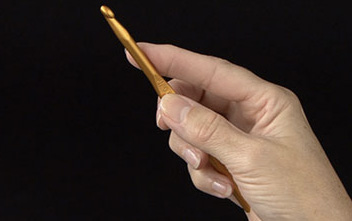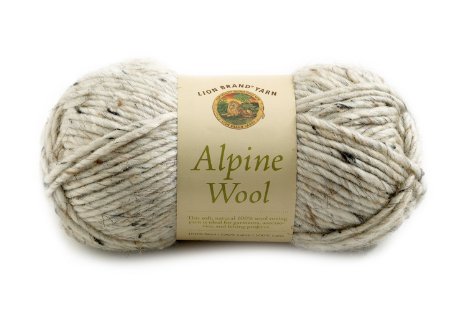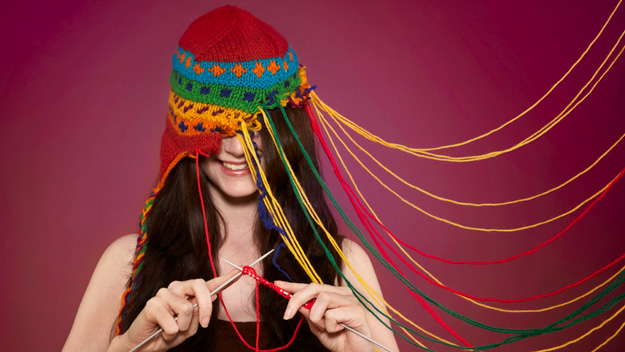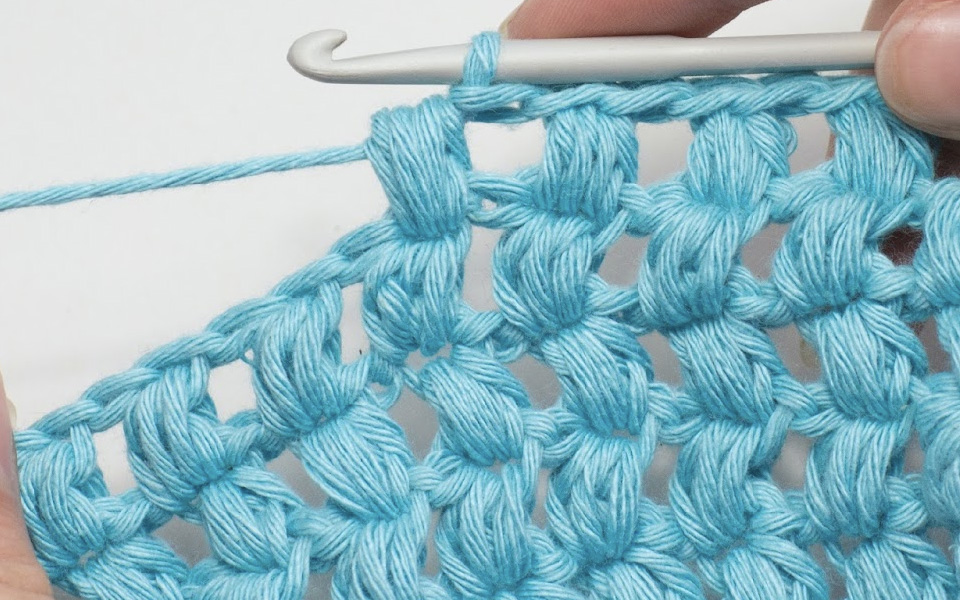Crochet is one of the most popular hobbies of our time. A large percentage of the people were inspired to learn to crochet because they saw someone do it, or by watching the process and they liked the finished items seen somewhere. But the most common reason is because there is someone in our lives that we want to make handcrafted items for.
Benefits of crochet is that it helps to boost self-esteem and allows you to have a creative hobby where you can express yourself. Also crochet has numerous physical and mental health benefits, which were researched in the book Crochet Saved My Life by Kathryn Vercillo.
Crochet helps young children to master a fine motor skill known as “crossing the midline”. This is an important developmental skill that connects the right and left brains and it’s required for overall coordination and everyday tasks such as writing, putting on socks or hitting a ball with a bat. Moreover a child who may not be succeeding in other areas of the curriculum may experience a boost to their self-esteem through mastering crochet.
In this article we will teach you the correct ways to hold a hook and work the yarn. So before you know it, you’ll be crocheting! If you don’t know why do you need a hook and yarn and what crochet is, we recommend you to start with our very detailed article on how to crochet.
Let’s start with a standard 5 mm aluminium hook which is comfortable to hold and make the movements. And we need a 4-ply acrylic or wool yarn, which is elastic and easy to crochet. Choose a solid color but light tone, as dark color stitches are harder to see.
How to hold a crochet hook

The Knife
The recommended way of hold is a grip, similar to holding a dinner knife. Position the hook in your hand so your thumb is flat on the front of the grip, your index finger is flat on the back of the grip, and the hook is facing you. Practice this hold a few times to make it comfortable.

The Pencil
Another hold called pencil, it’s like a holding a pen. The pencil grip gives you about as much control over your work as you would have when writing with a pen.

The Overhand Grip
This grip is used with Tunisian crochet hook (otherwise known as an afghan hook) is longer, and there isn’t a thumb rest. Overhand grip allows you to manipulate both the hook and the work as you crochet. Your working hand should form a sort of loose, easy fist, with the crochet hook in motion inside. Use the fingers and the hand for either manipulating the crochet hook or the work-in-progress. But let’s leave it till advanced lessons.
That is up to you to choose which way is more comfortable for you.
Yarn
Wool is an excellent choice for practicing your crochet stitches. It’s a resilient fiber, and is forgiving of mistakes as it is easy to unravel and re-use. Acrylic yarn is what most crocheters are using but some of the cheapest acrylics can be challenging to learn with. But it comes in a variety of colors, and affordable choice for yarn.

For your first several projects, avoid eyelash yarns, which can be frustrating to work with. For practice swatches choose yarn that is labeled with weight of “4” or higher, always get a bulky weight yarn. Leave using crochet thread for now as it is more hard to work with.
Crochet Stitches
Chain Stitches
Foundation chain
At the beginning of a project you group a chain of stitches, it is called a “foundation chain.”
Turning chain
It is often used between rows of crochet stitches. Chains are often used to connect the other stitches in a crochet pattern, particularly when working in the round.
Slip Stitch
In general, slip stitches are useful for joining one crocheted element to another, but they can be used to add color and visual interest to the surface of a crochet or knitting project. Bosnian crochet and some forms of short row crochet are rely entirely on slip stitches. By the way, the very first 19th century reference to crochet in history is shepherd’s knitting, which is slip stitch crochet!
Single Stitch
It’s a short stitch that appears frequently in many different crochet patterns. Once you’ve learned it, you’ll be able to make it look different depending on which loops you work through. If you know single crochet, you’re well on your way to making amigurumi.
Half Double Stitch
Half double crochet stitch builds upon the basic single crochet stitch by adding an extra step, and it used in all different types of projects.
Double Stitch
Double crochet (DC) is a must-learn basic and combines well with all of the other basic stitches, and there are unlimited ways to use it. It is the cornerstone of granny square crochet or filet crochet patterns.
Triple Stitch
Also known as treble crochet, it is taller than the double crochet stitch, but it follows the same basic steps.
Once you’ve learned these basic crochet stitches, you can do almost anything in crochet. Remember, crochet a set of long chains, knot them together at both ends and you already know how to crochet a scarf.

Ready to start?
As you’re in the process of learning and you want to choose a first project with patterns suitable for total beginners.
The easiest way is to go with design using only chains and single crochet stitch, and we recommend you to start with a lesson how to crochet a blanket. For a quick crocheter blanket usually takes somewhere between 11 -12 hours to make, but if you’re a total beginner, it will probably take you longer than that. But don’t worry, it absolutely worths it as at the end you will get a blanket with a simple but chic design.
This video from Mikey will help you get started with crochet as well as cover the basics such as chaining and single crochet.
How to achieve a complete mastery of crochet

Habits formed early on can influence the rest of your time spent crocheting. If you started with size G crochet hook, along with several balls of acrylic yarn – you are not alone. Your first hook might become your preferred one, unless you make a conscious effort to try others.
But your creativity will grow enormously with ability to use different hook sizes, brands and grips, as long as with different yarn materials.
Here is some tips
- Using only one hook limits the range of materials you can use successfully
- Using only one hook limits your options for solving tension problems
- Using only one hook will hinder you from discovering hooks that could give you better results
- Using only one hook can stifle certain aspects of creative growth
- Using only one hook will hold you back from achieving complete mastery of crochet
Your newly-purchased hook will make your hands feel tired and ache-y in comparison. But the key is don’t give up and solve that problem through constant practice.
We recommend you to own a complete range of hook sizes, from the smallest steel hooks on up through the largest sizes you can get your hands on. Don’t rely on habit, experiment! It might feels wrong at first, but give it a chance.
Achieving mastery of any craft requires knowledge and experience.
If at any point you decide that you’d like to go beyond the crochet basics, there are plenty of additional items to consider. You can take a look at detailed tutorial how to crochet a hat you always dreamed about.

Leave a Reply
You must be logged in to post a comment.